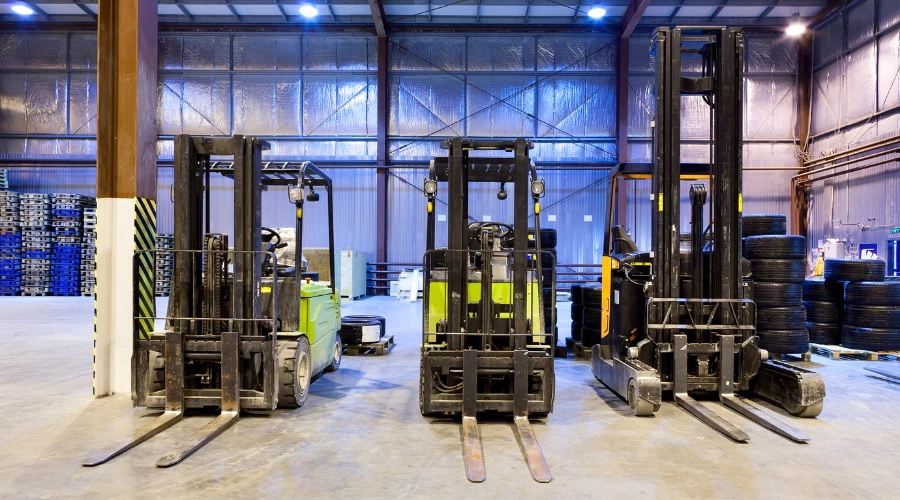
Electric battery technology is being adopted in the electric materials handling industry, especially in warehouse forklifts and heavy machinery, due to advancements in lithium-ion batteries that provide longer run times, faster charging, and minimal maintenance. The industry's controlled environments and charging infrastructure also support the shift. Fossil fuels have long been the industry norm, but their inefficiencies have caused manufacturers to struggle with providing alternatives at a lower cost. Lead-acid batteries were the first electrification option, but they are bulky, require frequent charging and extensive maintenance, and can cause harm. Lithium-ion batteries require less maintenance, can run for two entire shifts, and provide fast charging without removal or replacement.
Electric warehouse forklifts have been around for some time, and the first electrification option for them was lead-acid batteries. These cost-effective batteries emit no emissions while operating, making them ideal for indoor applications. However, their limitations make them less attractive for some functions. The battery packs are hefty and may have to be swapped once per shift. Additionally, the corrosive acid in the batteries can be harmful if spilled.
Another challenge with lead-acid batteries is the charging process. They typically require eight hours to charge and another eight hours to cool down before use. That means operations must allocate two or three batteries for each battery-powered lift truck. Furthermore, they require disciplined maintenance, such as regular watering and voltage equalization. Carving out space for a battery room in an existing facility can also be challenging.
Compared to lead-acid batteries, lithium-ion batteries have some critical differences. The charging process for lithium-ion batteries is much simpler. Operators can plug in the batteries directly from the equipment, eliminating the need for removal and replacement. That means there's no lifting and twisting to remove tanks or batteries manually or with tools. This feature also saves a lot of time and effort. The lithium-ion batteries are also lighter and more compact than their lead-acid counterparts, making them easier to install and manage. While lithium-ion batteries have a higher initial cost, they can save on labor and maintenance costs over time, making them a cost-effective option in the long run.
Building'sBuilding's electric infrastructure: Upgrading the electrical infrastructure may be necessary if more power is needed in the warehouse to support electric forklifts. Most forklift chargers require 480 volts, 3-phase electric service, and draw between 10 to 30 amps at peak demand. However, power failure concerns can be addressed by the building'sbuilding's backup systems. Many users already have backup power generation for short-term needs due to their electricity requirements for running computers, conveyors, and other equipment.
Ambient temperature in the facility: Using a power source outside its temperature rating can decrease performance and eventually damage the forklift. However, modern lithium-ion batteries can operate effectively in various temperatures, including hot, cold, and freezers (-40 to 113 degrees Fahrenheit).
Power Grid Capacity & Investment: It is essential to research the cost per kilowatt-hour and peak overage rates and the stability of the local grid while considering the total cost of using an electric grid-dependent power source. Even though there may be a higher upfront cost, many operators have reported lower total cost of ownership over the life of the forklift after switching to electric power.
Analyzing and selecting suitable Warehouse forklifts, electric warehouse forklifts, and electric material handling can be overwhelming. 13SQFT is here to help you by providing state-of-the-art equipment, warehouse forklifts, and battery-powered lift trucks for your warehouse and material handling needs under one platform.
POSTED BY
Team 13SQFT